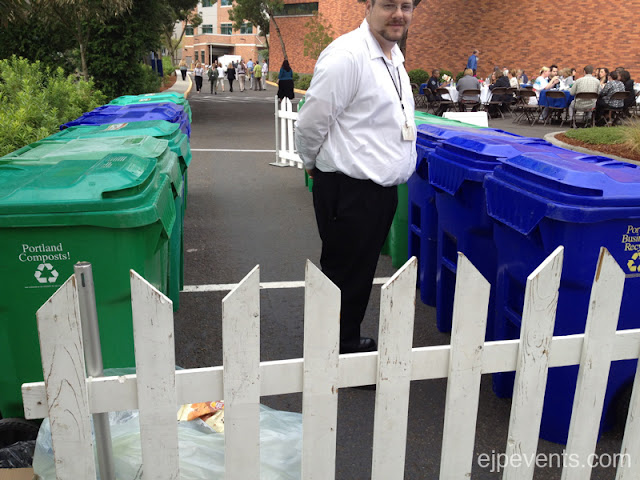Continuing our discussion of event design (and please, make it a discussion by commenting)...
More about our Event Design Series here at Day 1, and where the questions came from
Day 3: Sustainability: Special events can be wasteful. What steps can planners take to make sure they are producing a sustainable event? And how can you use alternative materials in your design work?
I think you have to look at the event's purpose and make sure you can align it with sustainability before you proceed. If you want to be known for sustainable events, yet promote events like Black Friday, you're getting off on the wrong foot.
That out of the way, then you should take the event apart critique each element for the following: 1. Is this element creating waste -- and can this waste be diverted or recycled? 2. Is this element using resources in an ethical way? (Ethical labor, ethical apportionment of food, water, energy)
Also, looking at the event as a whole: 3. What is the environmental legacy of the event? 4. What is the moral and ethical legacy of the event?
Alternative materials are everywhere. The last ISES Art of the Party event showed some great examples. I saw everything from Home Depot yard cloth used as table covering (which could be used in gardens after the event) to upcycled books (that would have been recycled anyway) being used as design materials. Catering is part of event design. Much has been covered regarding local and sustainable food sources. Lighting is part of event design. We have wonderful, low wattage light treatments available to us now. Look at every aspect you possibly can.
Event materials that are sustainable 1) do not draw heavily on, or entirely avoid, virgin resources such as cut trees or mined metals; 2) divert waste from landfills; 3) or can be reused, thus staying out of landfills; and 4) do not promote toxic chemical buildup through their use (e.g. batteries going in the trash)
You have a responsibility as a planner and a designer to explore alternative, sustainable sources first when creating your designs.
Event Design Series, Day 3: Sustainability
Unknown
November 24, 2012
Tags:
Diese Posts könnten dir gefallen
MerchantCircle Small Business Confidence Poll
November 18, 2009

Touring for Dollars
Mai 01, 2019
Voting open for NW Meetings and Events Best of 2012
Januar 16, 2012

Why is airport fast food so bad?
Dezember 05, 2008

National Federation of Nurses Launch
April 15, 2009

Event Design Series - Part 6: Good, Bad, and Ugly
Dezember 20, 2013
Interesting poll over at party-wedding.info
Dezember 05, 2008

Ultimate Guide to Nonprofit Fundraising
April 24, 2019
Featured Post
{ The Daily Reblog } Portland Event Planners Love...Urban Picnics and Company Barbecues
Unknown
September 10, 2013
The run-of-the-mill "company barbecue in the park" is falling out of favor. …
Pages
Random Posts
3/random/post-list
Popular Posts

Favorite iPhone apps for Event Planners
Juni 09, 2011

ISES Portland March meeting - "Pimp My Warehouse!"
März 25, 2009
Menu Footer Widget
Crafted with by TemplatesYard | Distributed by Gooyaabi Templates



0 Kommentare